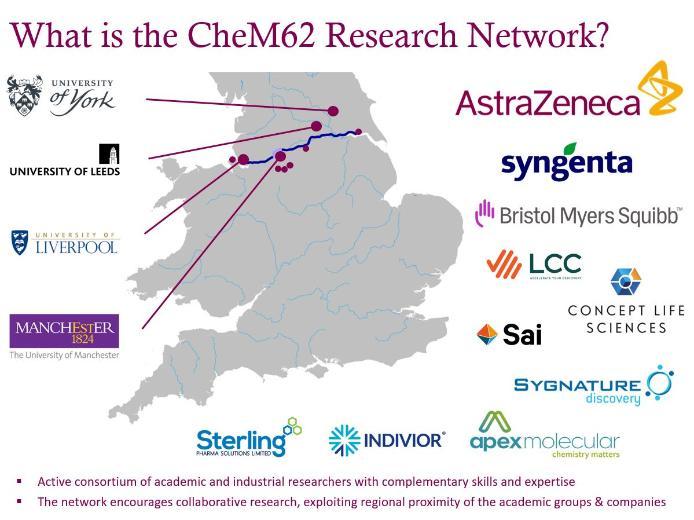Research
Research within the cluster includes advanced material chemistry focused on unmet clinical needs in collaboration with pharmacologists and clinicians globally.
Key projects have included the EPSRC-funded Nanotechnology Grand Challenge Healthcare programme and subsequent grant awards that led to the world's first human trial of orally-dosed nanomedicines for HIV therapy and a $50m multinational US Agency for International Development consortium programme (Project OPTIMIZE) for improved HIV therapies. The team also collaborated to show the first demonstration of malaria chemoprophylaxis from a long-acting injectable nanomedicine with UoL pharmacology and the Johns Hopkins Malaria Research Institute.
Recently, cluster members, with the Liverpool School of Tropical Medicine and the pharmaceutical company Eisai, have candidate selected a new molecule for the treatment of the filarial diseases lymphatic filariasis and onchocerciasis. AWZ1066 will be the first fully synthetic Anti-Wolbachia drug to be trialled against these diseases (PNAS 2019) with a Phase 1 clinical trial planned for 2021.
With Astra Zeneca and LSTM, we have also completed the largest neglected tropical diseases screening campaign in history (AWOL, filariasis) with cheminformatic hit selection and triaging from over 1.4 million compounds (Nature Comm. 2019). The medicinal chemistry group also developed a novel tetraoxane antimalarial candidate which has potential against artemisinin-resistant malaria parasites (Nature Comm 2017). As part of a new focus on AMR drug development, the group also has made significant progress on the chemistry of synthetic teixobactin's and mechanism of action studies. (Nature Comm 2020).
Both the nanomedicines and medicinal chemistry groups have strong interactions with large and small companies, hospitals and charities including Pfizer, AstraZeneca, Gilead, Cipla, Abbott and Merck, Médecins Sans Frontières, Clinton Health Access Initiative, St Stephen’s AIDS Trust, British Society for Antimicrobial Chemotherapy, Fight for Sight, Liverpool Health Partners and the Drugs for Neglected Diseases Initiative has led to considerable support for research across the cluster with government funding coming from EPSRC, MRC, Bill and Melinda Gates Foundation, MRC and NIH(US).
The University’s Open Innovation Hub for Antimicrobial Surfaces (OPIHAS), established with £4.8 million of ERDF, Innovate UK and industry funding, has a strong track record in surface science research and innovation, combining advanced techniques for design, functionalisation and characterisation of surfaces with extensive industrial partnerships and supply chains to develop novel anti-biofilm, anti-viral and anti-malarial surface technologies. OPIHAS is co-founder of the UK National Biofilms Innovation Centre (NBIC), a £26 million Innovation and Knowledge Centre funded by the BBSRC, Innovate UK and Industry, launched in 2017. OPIHAS leads anti-infective technologies workstreams in the £6.6 million ‘Formulated Materials for Infectious Disease Prevention’ and the £120 million ‘Infection Innovation Consortium (iiCON)’ ESIF programmes, which bring together the North West’s largest concentration of infectious diseases research in the UK. Overall, these activities engage with a translational ecosystem of >150 industries.
In terms of green chemistry and industrial biotechnology (Carnell group), new enzymes are being discovered and developed for the conversion of biomass-derived materials into biodegradable bioplastics (Green Chem. 2015). A one-pot multienzyme bioconversion was demonstrated (Green Chem. 2017) for the highly efficient conversion of cellulose-derived feedstock HMF into bioplastics precursor FDCA and this is being scaled up for commercialisation with Biome Bioplastics with Innovate UK support. With funding from BBSRC, EPSRC and IUK, new enzymes are being developed for the conversion of FDCA and related lignin-derived dicarboxylic acids into bioplastics and also for recycling of waste plastic.
